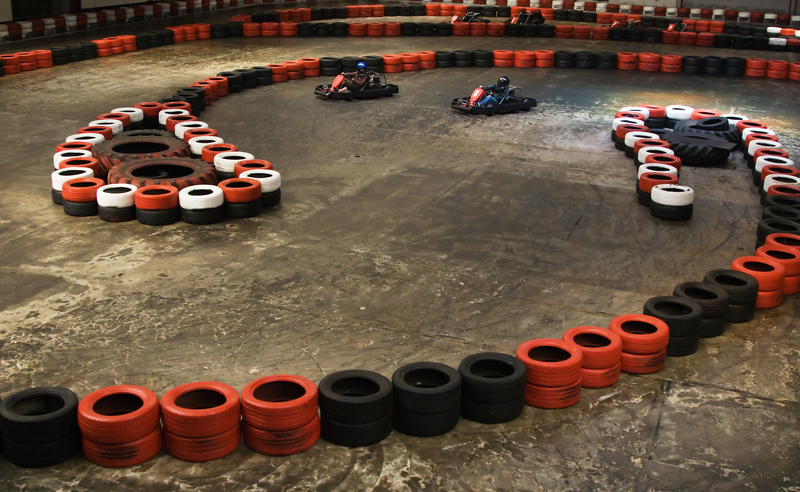Effortless Techniques to Control Clutter in the Long Run
Is clutter taking over your home, workspace, or digital life? For many, staying organized is an ongoing battle. But what if keeping things tidy could be simple and sustainable? In this comprehensive guide, we'll unveil powerful yet effortless techniques for long-term clutter control. Say goodbye to the overwhelming mess and hello to a cleaner, calmer environment--permanently.

Understanding the Root Causes of Clutter
To effectively implement clutter management solutions for the long haul, it's important to recognize the behaviors and mindsets that lead to excessive accumulation. Common reasons include:
- Emotional attachment to objects or gifts
- Procrastination when it comes to sorting and discarding items
- Lack of designated storage for possessions
- Impulse shopping without considering available space
- Unclear household rules about what stays and what goes
By addressing these underlying factors, you can establish a solid foundation for lasting tidiness and organization.
Why Effortless Clutter Control Techniques Work Best
A common misconception is that banishing mess requires massive, draining purges. In reality, small, sustainable clutter solutions make a bigger impact. Here's why:
- Consistency beats intensity: Short, easy habits are easier to repeat every day than occasional, grueling clean-ups.
- Less overwhelm: Simple routines prevent chaos from building up, making organization feel doable.
- Long-term mindset: Focusing on maintenance--rather than one-time fixes--keeps your environment clutter-free indefinitely.
Let's explore effortless techniques that will help you maintain a clutter-free space for the long run.
Daily Effortless Habits for a Clutter-Free Lifestyle
1. The One-Minute Rule
Adopt the "One-Minute Rule": If a task takes less than one minute--such as returning an item to its place, wiping a surface, or sorting out some papers--do it immediately. This technique prevents small messes from morphing into major clutter, and can be applied anytime, anywhere.
2. Establish Drop Zones
Designate specific, visible areas or baskets near entrances, desks, or busy spots where daily items (mail, keys, bags) are placed temporarily. Regularly clear out these drop zones to prevent overflow. This habit contains messes, making your space feel instantly neater.
3. Nightly Five-Minute Reset
Each evening, spend just five minutes returning items to their proper places--whether it's toys, dishes, or laundry. Make it a family or roommate activity. By resetting daily, you prevent accumulation that leads to overwhelming mess.
4. Incorporate the "One In, One Out" Rule
For every new item you bring home, donate or discard another. This clutter control method keeps belongings in balance and stops storage spaces from overflowing. It works for clothing, books, kitchenware, and even digital files.
Weekly and Monthly Clutter Prevention Tips
1. Routine Sorting Sessions
Set a recurring "maintenance" appointment--weekly for smaller areas and monthly for larger spaces. Use a timer and focus on one spot at a time (like a desk drawer or closet shelf). Sort, toss, or donate whatever you no longer need.
2. Regular Donation Runs
Keep a dedicated donation box in your closet or garage. When it's full, take it to your local charity. This ongoing routine helps you release unused items and prevent them from piling up.
3. Paper Clutter Control Tactics
Set aside time every week to go through mail, receipts, and documents. Digitize important files, shred sensitive papers, and recycle the rest. This helps avert junk-mail avalanches and lost bills.
Seasonal Deep Decluttering Techniques
1. The Four-Box Method
When doing a deeper clutter overhaul, use four boxes labeled: Keep, Donate, Trash, Relocate. As you move through your home or office, sort every item into one of these boxes. This simple system streamlines decision-making and speeds up the decluttering process.
2. The 12-12-12 Challenge
Challenge your household to each find 12 items to throw away, 12 to donate, and 12 to put back in their proper spots. Make it a game, and see how quickly clutter disappears!
3. Smart Organizing Solutions
After every seasonal purge, evaluate your remaining storage needs. Invest in clear bins, drawer dividers, and attractive baskets to make maintenance easier and cater organization to your lifestyle. Labeling bins and shelves is especially helpful for kids or forgetful adults.
Effortless Digital Declutter Methods
The digital realm is often overlooked, yet digital clutter can sap focus and productivity. Here's how to prevent digital chaos:
- Dedicate five minutes daily to deleting unnecessary emails and unsubscribing from spam.
- Regularly back up and sort digital files into labeled folders for quick retrieval.
- Uninstall unused software or apps to free up space and reduce distractions.
- Organize your desktop and downloads folder weekly to maintain a clean digital workspace.
Declutter While You Clean
Combine regular cleaning with decluttering for maximum efficiency:
- When dusting or vacuuming, quickly check each room for items that don't belong. Put them away or add to the donation box.
- During laundry day, pull out worn-out or unworn clothes for donation.
- When shopping for groceries or toiletries, use up older items first and toss expired goods right away.
How to Involve the Whole Household in Long-Term Clutter Control
Shared spaces require shared responsibility. Make effortless organization part of your household culture:
- Create clear "homes" for shared items and label shelves to make it easy for everyone to put things back.
- Assign daily or weekly "tidy up" tasks by age and ability; make it a routine before fun activities.
- Communicate openly about what items are valuable and which can go, respecting each member's needs.
By involving everyone, you build habits that keep your spaces orderly--effortlessly and for the long run.
Psychological Tricks for Effortless Clutter Management
Besides habits and systems, the right mindset makes maintaining tidiness much easier. Here are some psychological techniques to try:
- Visualize your ideal environment: Keep a picture or list handy to remind you what you're working toward--a calm bedroom, a neat kitchen, an organized desk.
- Practice gratitude for what you own--but regularly ask yourself if any items have outlived their usefulness or no longer bring joy.
- Reframe decluttering as self-care, not punishment. Remind yourself that every item you release creates space for your life, not just your things.
Organizing Tools That Make Tidying Effortless
Simplicity is key when it comes to organizing tools. You don't need high-tech gadgets--just a few clever basics can make all the difference:
- Baskets and bins in every room for fast, visible sorting
- Drawer organizers to prevent "junk drawers" from forming
- Labels for boxes, shelves, or files to ensure everyone knows where items belong
- Hooks and shelves by entrances for coats, bags, and keys
- Trays for catch-all areas to keep daily essentials neatly corralled
Effortless Clutter Control for Busy Individuals
If your schedule is jam-packed, try these time-saving decluttering strategies:
- Use commercial breaks or waiting time to return stray items to their spots.
- Set short timers--5 or 10 minutes--to declutter one area before moving on with your day.
- Automate digital organization using apps that sort files, manage emails, or schedule reminders for maintenance.
Troubleshooting Clutter: Common Pitfalls and How to Overcome Them
"I don't have enough space."
Solution: Evaluate what you truly use and need. Utilize vertical storage, under-bed bins, and multi-purpose furniture for smart space-saving. Regular purges help you fit your life into your available space, not the other way around.
"My family won't help."
Solution: Share the benefits of an uncluttered space--more time, less stress, and easier cleanups. Start with your own items and lead by example. Gradually invite others to participate in simple, non-judgmental ways. Celebrate small victories together.
"I always get messy again."
Solution: Focus on maintenance, not perfection. Set realistic expectations and adjust routines as your lifestyle changes. If something isn't working, rethink your systems--maybe that drop zone needs to move or you need more hooks in the entryway.

Benefits of Sustainable Clutter Control
Keeping clutter at bay isn't just about having a neat-looking space. The long-term benefits of effortless clutter management and ongoing organization include:
- Reduced stress and anxiety: A tidy environment fosters calm and clarity.
- Increased productivity and focus: Fewer distractions mean more effective work and relaxation.
- More free time: Less cleaning, searching, and reorganizing gives you hours back each week.
- Improved financial habits: Knowing what you own prevents unnecessary purchases.
- Greater contentment at home: A welcoming space is enjoyable for you and any visitors.
Conclusion: Make Clutter Control Second Nature
Mastering effortless techniques to control clutter in the long run is about adopting gentle, daily habits paired with periodic routines. It's not about being perfect, but about consistently making tiny choices that support order and peace. With these practical strategies--from one-minute tidying to seasonal purges--you'll find that maintaining a serene, clutter-free environment is not only possible, but enjoyable.
Start small, stay consistent, and celebrate the progress you make. Your home (or workspace) can remain organized and tranquil for years to come with minimal effort--leaving you free to focus on what matters most.
Ready to begin your journey to effortless, long-term clutter control?
Pick one new routine to get started today--you'll be amazed at the difference it can make!